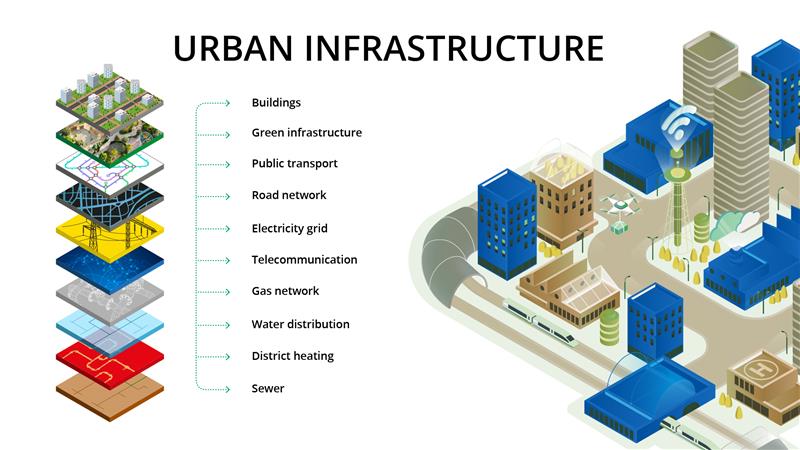Urban Infrastructure - NTNU Civil Security
NTNU Civil Security – Urban Infrastructure

The research group on Urban Infrastructure aims to strengthen the resilience of urban infrastructure in a holistic way.
Urban infrastructure is a heavily interconnected and interdependent system that is affected by external factors like climate change, urbanization, and technological advances. However, current management still happens in silos, focusing on individual components instead of understanding how everything is linked. This limits the ability to adapt to changes. Also, planning often doesn't consider future uncertainties, the possibilities of IoT, or how one failure in the system can lead to a chain reaction of other failures.

Illustration of Urban Infrastructure layers: The image breaks down key components of urban infrastructure, showing the interconnected layers that support city life. From top to bottom, it includes buildings, green infrastructure, public transport, road network, electricity grid, telecommunication systems, gas network, water distribution, district heating, and sewer systems. Each layer represents essential services that contribute to the functionality, sustainability, and resilience of urban environments. (Illustration: Kolbjørn Skarpnes, NTNU)
-
Jochen Köhler Professor
+47-73594517 +4746641572 jochen.kohler@ntnu.no Department of Structural Engineering -
Marius Møller Rokstad Associate Professor
marius.rokstad@ntnu.no Department of Civil and Environmental Engineering -
Pierluigi Salvo Rossi Professor; Deputy Director; Head of the Ph.D. Program in Electronics and Telecommunication
pierluigi.salvorossi@ntnu.no Department of Electronic Systems
